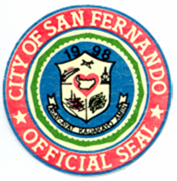Background on Mechanized Septage Treatment Systems
There are a number of manufacturers of mechanized septage treatment equipment. EnviroKonsult Equipment and Services Inc., of Manila represents JEFFCON Engineering, an engineering firm out of Malaysia that manufacturers high quality septage processing systems. Mechanized septage treatment systems such as the one described below have several distinct advantages:
- Portability. The mechanical systems and tanks can easily be moved to another site if needed;
- Small footprint. The mechanized system requires much less space than non-mechanized options. The proposed mechanized system by EnviroKonsult requires between 600 and 1000 square meters, or about a quarter the size of non-mechanized options;
- Suited to local conditions. JEFFCON, the manufacturer, has several installations in Malaysia and other locations in SE Asia with similar septage characteristics as in the Philippines; and
- Less concerns with odor and hygiene. The plant design provides for enclosed equipment and tanks, which limits exposure of workers and the public to septage and sludge.
There are four components of the proposed JEFFCON Mechanized Septage Treatment Facility:
1. Septage Receiving Station
2. Sludge Dewatering Facility
3. Polymer Plant
4. Centrate Effluent Treatment Plant
The Septage Receiving Station
 The septage receiving station is the first step in the treatment process. Septage trucks connect their tank outlet hoses to the facility inlet coupler to offload the septage. Through the use of an automated key pad, the driver logs in and the facility records the time, date and volume delivered. This automated manifesting system helps provide accurate records of septage deliveries, which serves as an important management tool for operating the overall septage program.
The septage receiving station is the first step in the treatment process. Septage trucks connect their tank outlet hoses to the facility inlet coupler to offload the septage. Through the use of an automated key pad, the driver logs in and the facility records the time, date and volume delivered. This automated manifesting system helps provide accurate records of septage deliveries, which serves as an important management tool for operating the overall septage program. As the septage is off-loaded, it is screened, degritted and undergoes primary dewatering. The remaining septage sludge is transported to the next stage in the facility; the sludge dewatering station by an automated screw conveyor.
Sludge Dewatering Facility
With the JEFFCON technology, the sludge from the receiving station is delivered to a centrifuge for final dewatering. The centrifuge is a drum that spins at a high rate of speed, similar to a mechanical clothes dryer. As the sludge is spun, water separates from the solids leaving a dried cake, which is transported to to the sludge storage area. The dewatering system includes:
- Sludge feeding system;
- Polymer make up system;
- Thickening and dewatering system;
- Solids conveying system; and
- Electric control system.
Polymer Plant
 Polymer is a coagulent that is added to the septage flow to help separate out components, typically solids from liquids. In dewatering, it assists with centrifuging sludge, making the process more efficient.
Polymer is a coagulent that is added to the septage flow to help separate out components, typically solids from liquids. In dewatering, it assists with centrifuging sludge, making the process more efficient.Polymer is expensive, so it is important to use the proper amounts to ensure that none is wasted. The mechanized polymer plant prepares the solution of polymer and water to the exact specifications of the operator, ensuring that the proper amount is used in the treatment process.
The polymer plant has a polymer feed tank, metering pump, and a simple user interface. JEFFCON designs the system for ease of use and one-step troubleshooting through a state-of-the-art touch-screen control panel.
Once the polymer solution is prepared, it is mixed with the raw septage at the receiving station as well as in the dewatering system to increase the overall system dewatering efficiency.
Effluent Treatment System
The dewatering steps that occur during septage receiving and at the centerfuge results in septage effluent, or liquid that still contains high levels of dissolved organic pollution. This must be removed in order to meet the discharge requirements that DENR sets for discharging into surface waters in the Philippines.
In order to accomplish this, JEFFCON uses a mechanized aerobic treatment system that pumps oxygen from the atmosphere into the septage effluent processing tanks. The oxygen stimulates bacteria that are used to consume the organic matter in the effluent. While this process is automated, operators must be trained to carry out specific routine tests to ensure that the process is working properly.
When properly operated, mechanized effluent treatment facilities, like the JEFFCON system, are highly efficient at removing the pollution from the septage effluent. The resulting treated effluent may then be used as reclaimed water for a variety of purposes including truck washing, agricultural and landscape watering.
EnviroKonsult is proposing to install and operate the San Fernando City septage treatment system using JEFFCON technology. The proposal includes complete site design and engineering, installation and commissioning. For more information on the EnviroKonsult proposal, or JEFFCON systems, visit EnviroKonsult on-line at www.waterkonsult.com.










